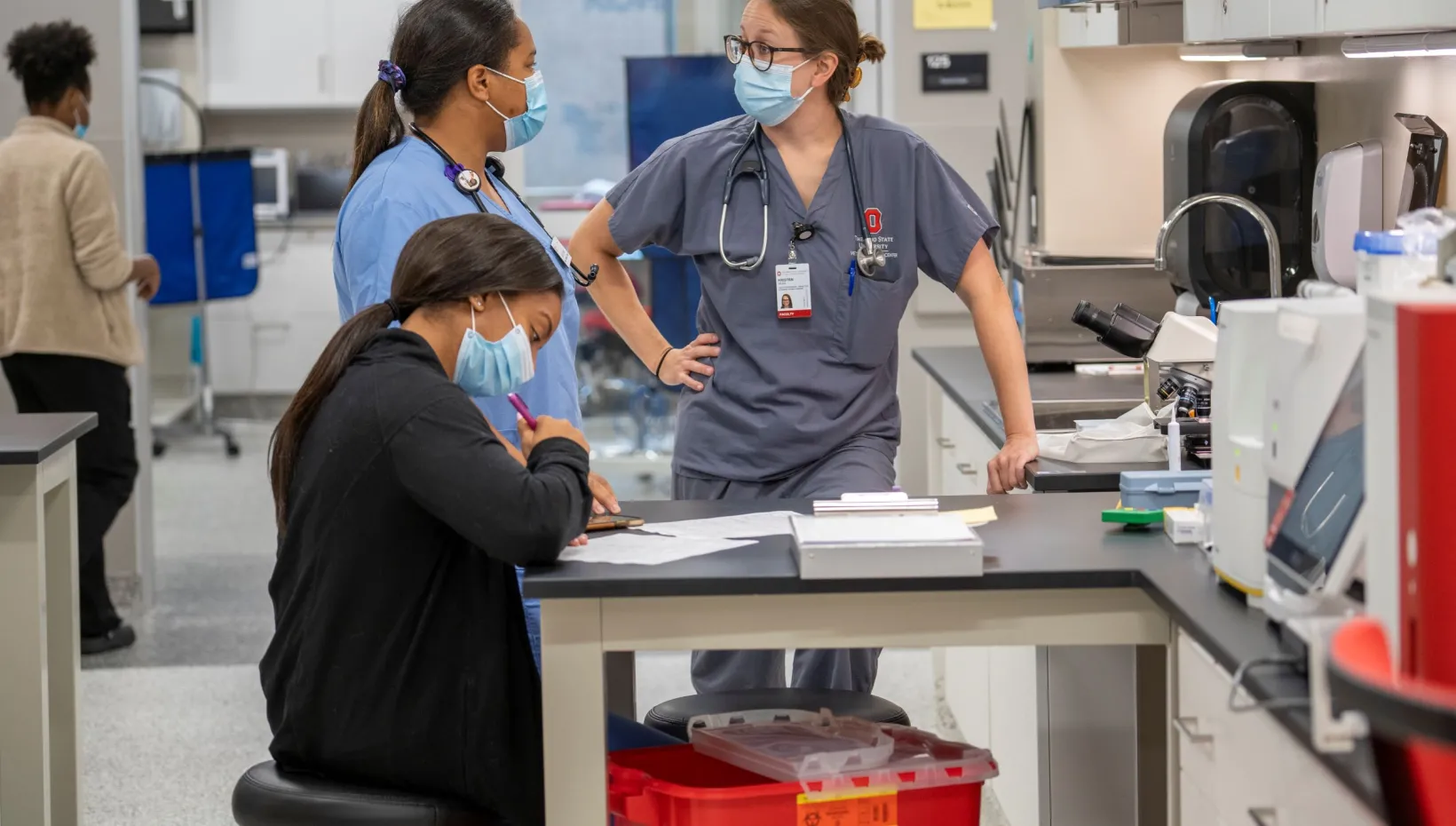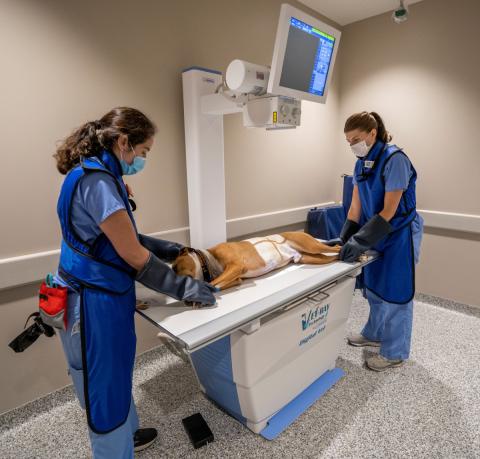Preparing for Excellence in Veterinary General Practice Program

Article by: Allison Burk
Originally Published
The Ohio State University College of Veterinary Medicine is shifting the focus of its clinical training to encompass training across an entire spectrum of veterinary healthcare options, from technologically advanced and higher-cost options to more practical ones consistent with the veterinary care and cost expectations of a diverse population of clients. The primary goal − to educate career-ready veterinarians who can provide high-quality, affordable care while maintaining sustainable business practices.
Read our September 2021 Viewpoint in the Journal of the American Veterinary Medical Association to learn how the college is preparing veterinary students for excellence in general practice by building confidence and competence by focusing on spectrum of care.
In January of 2019, the college began a major curriculum redesign — a key component of the Preparing for Excellence in Veterinary General Practice program. This program utilizes the principles of an outcomes-based education, including backward design, to ensure the college teaches and its students learn and master the core spectrum of care sub-competencies. This comprehensive curriculum incorporates a continuum of clinical and didactic training focused on preparing students to be competent, confident and practice-ready veterinarians upon graduation and was developed by the faculty in consultation with general practitioners.
Marshall Aanestad, DVM, is a recent Ohio State College of Veterinary Medicine graduate and the owner of Athens Veterinary Clinic. Aanestad agrees that more learning opportunities specifically geared toward practice management are needed for veterinary students.
“Unfortunately, I didn’t have the time to enroll in the business minor during my veterinary education. Had I known that I would be starting a business from the ground up four years ago, I would have tried to spend more time focusing on management,” said Aanestad.
“I hope that students going through the Preparing for Excellence in Veterinary General Practice program get plenty of opportunities to not only learn to be doctors, but also how to effectively manage a practice. I’ve learned that those are two very different skill sets and my hope is that all future veterinarians coming out of Ohio State will be able to excel at both,” - Marshall Aanestad, DVM '20
The framework for the program
The Preparing for Excellence in Veterinary General Practice program incorporates the Competency-Based Veterinary Education (CBVE) framework of the American Association of Veterinary Medical Colleges (AAVMC). The components of the program can be mapped to all the specific competencies in the CBVE framework, as well as to the AVMA’s Council on Education outcomes. Competency-based education (CBE) has been on the rise in veterinary medicine as part of a critical paradigm shift and the college has been at the forefront of this new educational approach.
The Preparing for Excellence in Veterinary General Practice program emphasizes skills training, case-based reasoning, critical thinking and problem-solving, business and practice management, and training in the principles of pet-centered care and the human-animal bond. Students receive immersive, hands-on training starting in their first year with clinical and communication skills training. That continues throughout their education, culminating in their fourth year, where students provide primary care in the Frank Stanton Veterinary Spectrum of Care Clinic.
“The CBVE framework was developed by a collaborative of educators with consensus from across all the educational programs that partner in the AAVMC. There is increased emphasis on day one skills, knowledge, attitudes and values required in the new graduate to enter the practice workplace and be successful,” - Emma Read, DVM, MVSc, DACVS, associate dean for professional programs.
“We worked to have our program align with this framework and are thrilled to know that we are helping our students develop meaningfully along the milestones of their journey to career longevity in practice," Read says.
This continuum of clinical training aims to deliver new learning experiences that will require students to think as doctors from day one of their education. The program is designed to provide essential hands-on skills training throughout the college’s four-year DVM program and is comprised of several hands-on components that move veterinary students along their path from student to practice-ready veterinarian.
How this program impacts the future of veterinary medicine

Through the implementation of this program and immersing students in a clinical training experience with a spectrum
of care focus interwoven into all four years, Ohio State’s College of Veterinary Medicine graduates will be better prepared to provide a wide range of care options to patients and their owners while adding value to their employers' businesses earlier in their careers.
“This approach aligns with our focus on graduating excellent veterinarians ready to more effectively provide primary care in general practice, preserve the human-animal bond, bring more value to their employers and operate financially thriving private practices that better serve the needs of all patients and clients,” said Rustin Moore, DVM, PhD, DACVS, dean, College of Veterinary Medicine and Ruth Stanton Chair in Veterinary Medicine. “The program supports the college’s ambition to Be The Model® comprehensive college of veterinary medicine by delivering an extraordinary and value-driven education that prepares veterinary students to successfully practice broadly across the spectrum of care.”
The College of Veterinary Medicine will continually assess the program’s impact on the early career success of graduates. Student assessment and exit surveys of new graduates, alumni, and employers and pre-and post-implementation surveys will provide valuable feedback to evaluate the program and make appropriate adjustments consistent with the college's Be The Model® approach to its core missions.
